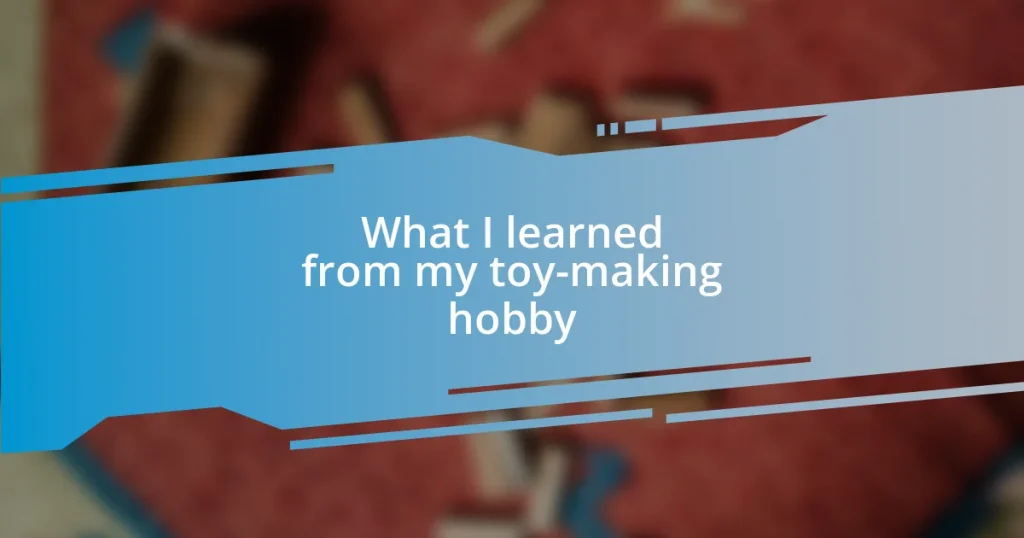Key takeaways:
- Typography influences emotional response and clarity; choices in typeface and spacing significantly impact how messages are perceived.
- Different typography styles, such as serif and script, evoke distinct emotions and should align with the context and audience.
- Integrating typography with visuals enhances storytelling and engagement, creating a dialogue that captivates the audience’s attention.

Understanding the Basics of Typography
Typography is essentially the art of arranging type – it’s about more than just choosing a pretty font. I remember when I first discovered the impact of typography on emotional response; a striking typeface can evoke feelings of excitement or calm. Have you ever felt a spark of joy just from how a title is presented?
At its core, typography includes understanding typefaces, hierarchies, and spacing. It’s fascinating how a slight change in letter spacing, known as kerning, can alter a message’s clarity. I once struggled with a project where the text looked cramped, and it dawned on me just how crucial that simple spacing is to readability and aesthetics.
Choosing the right typeface can transform the viewer’s perception entirely. For instance, using a bold serif font can convey tradition, while a sleek sans-serif can feel modern and clean. I’ve found that experimenting with different styles not only enhances creativity but also deepens my appreciation for how typography shapes not just art, but communication itself. How does typography resonate with your personal experiences in design?

Exploring Different Typography Styles
Exploring different typography styles is like stepping into a world of endless possibilities. Each style carries its unique character and emotion, almost like voices in a conversation. For example, when I first encountered script fonts, I was captivated by their elegance and fluidity. They added a personal touch to my work that felt like a handwritten note, creating an intimate connection with the viewer.
On the other hand, I’ve always been drawn to bold display fonts. They stand out and command attention. I remember designing a poster where I used a chunky, playful typeface, and it brought such energy to the piece. The choice of typography transformed the feel of the event I was promoting, making it seem vibrant and inviting. It’s incredible how something so seemingly simple can have such profound effects.
When experimenting with these styles, it’s essential to consider the context and audience. I often reflect on how a particular typeface aligns with the message I want to convey. For instance, a classic serif might suit a formal gathering, while a fun, quirky font could work for a children’s party. The right choice resonates with the audience and enhances the overall experience in an art piece.
| Typography Style | Description |
|---|---|
| Serif | Classic and traditional, often used in print. Provides a formal and authoritative feel. |
| Sans-Serif | Modern and clean, typically used for web content due to readability. |
| Script | Elegant and personal, mimics handwriting and conveys warmth. |
| Display | Bold and creative, designed to grab attention and evoke emotions. |

How Typography Enhances Visual Communication
Typography plays a vital role in how we convey messages visually. I’ve noticed that when I use a well-chosen typeface, it can create an immediate emotional connection. For instance, during a project where I designed an invitation for a charity gala, the elegant serif font I selected not only felt sophisticated but also conveyed a sense of importance and compassion. It directly influenced how the recipients perceived the event, emphasizing the cause’s significance.
To illustrate the power of typography, consider these points:
- Clarity: A clean typeface enhances readability and ensures the message is easily understood.
- Emotional Impact: Fonts like script can evoke warmth, while bold displays can convey energy and dynamism.
- Brand Identity: Typography helps reinforce a brand’s personality, establishing a visual connection with its audience.
- Visual Hierarchy: Proper typographic choices guide the viewer’s eye, making essential information stand out.
- Cohesiveness: When used consistently, typography unifies visual elements, creating a harmonious design.
Reflecting on my experiences, I remember working on a logo design where the type was the centerpiece. The choice of a modern sans-serif added a contemporary flair, making it memorable. That simple decision made all the difference in how people related to the brand—it was eye-catching and felt fresh. It’s moments like this that make me appreciate just how powerful typography can be in art and design.

Integrating Typography into Artwork
Integrating typography into artwork can often feel like a dance between text and visuals. I recall a time when I experimented with layering text over a vibrant background in a mixed-media piece. The way the typography interacted with the colors not only created depth but also drew viewers in, inviting them to explore the layers of meaning behind both the words and the visuals. Have you ever noticed how a single word can shift its meaning based on its placement and style?
Moreover, the marriage of typography and imagery can tell a cohesive story. During a project for a local art show, I combined hand-drawn lettering with photography, and it brought a unique charm to the exhibit. The organic nature of the typography paired beautifully with the starkness of the photographs, making the entire display feel alive. It’s astounding how typography can serve as a bridge, connecting disparate elements into a unified vision.
Lastly, the decision to integrate typography into artwork is not just about aesthetics; it involves creating a dialogue with the audience. I think about the time I used large, bold typography to make a statement in a street mural. The playful yet powerful font screamed for attention, and passersby couldn’t help but stop and engage with the message. Hasn’t there been a moment when you encountered art and found yourself captivated by a phrase that just stuck with you? That emotional pull is what makes typography so essential in art.
















